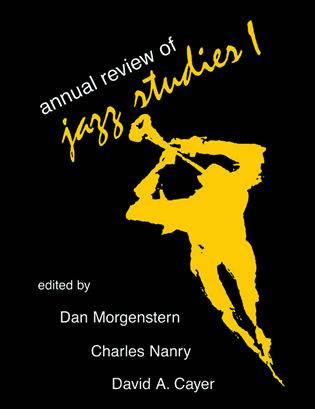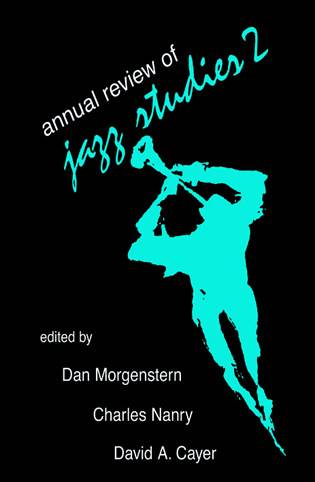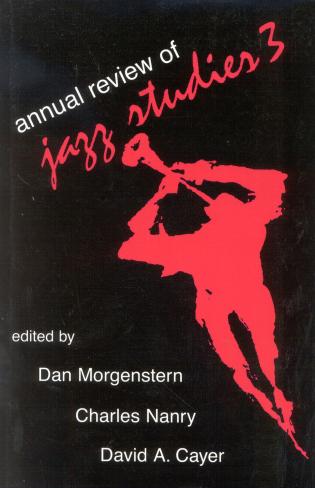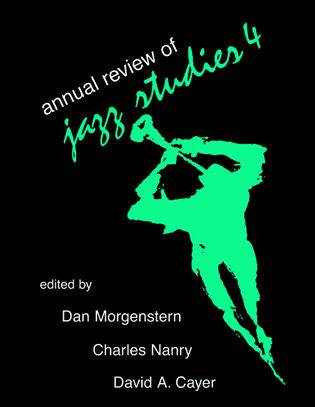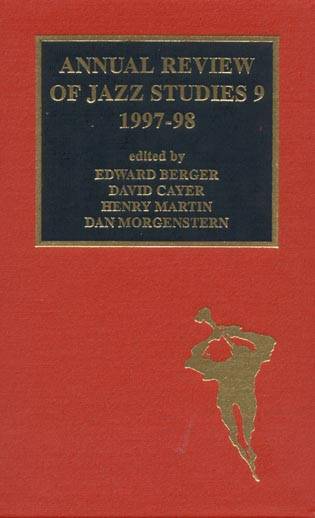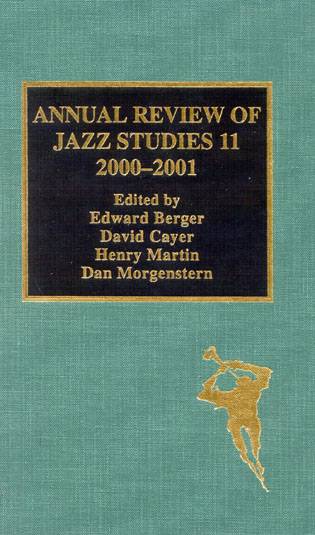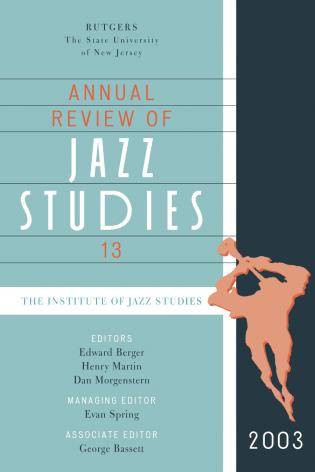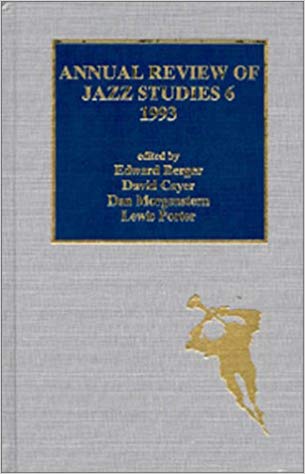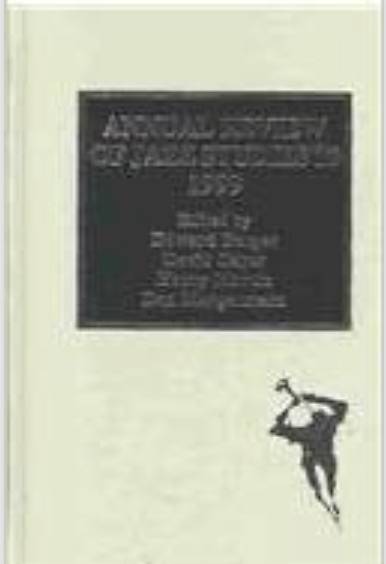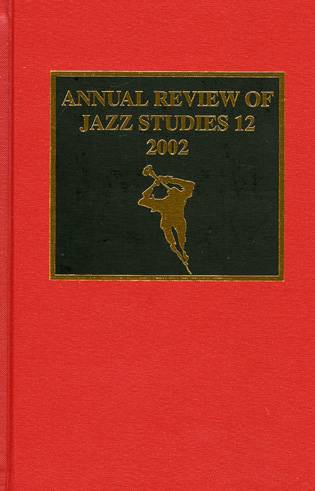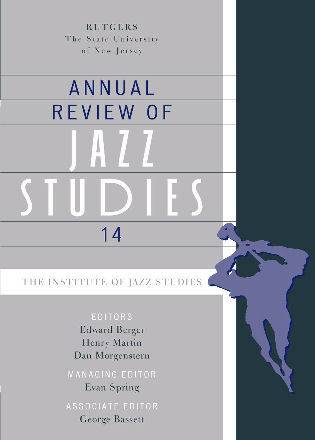Dan Morgenstern: Editor - Annual Review of Jazz Studies
The Annual Review of Jazz Studies is described by its editors as "the only publication in the English language devoted to scholarly research on jazz and related musical forms ...." For serious jazz scholars the Annual Review of Jazz Studies remains the central serial publication.
The Annual Review of Jazz Studies is dedicated to scholarly research on jazz and its related musical forms. It recognizes the growing awareness of jazz as a cultural phenomenon. All volumes include numerous musical examples, a book review section, a portfolio of jazz photographs, and bibliographic surveys.
Cloth-bound, with a photo insert of jazz pictures by noted trumpeter Joe Wilder
Volume 5 features articles and reviews on the Ellington legacy; George Duvivier; Milt Hinton; John Coltrane; a bibliography of British jazz periodicals; an expanded review section; and a review essay on jazz autobiographies.
This volume is a special double issue covering the two years of 1997 and 1998. It begins with a series of studies devoted to the classic ballad, "Stella by Starlight," focusing on various performances by groups led by Miles Davis as well as discussing visits to "Stella" by Oscar Peterson and Bill Evans. Other articles in this volume cover major figures in the heritage of jazz, such as Bix Beiderbecke, Martial Solal, Charlie Parker, John Coltrane, and Ornette Coleman. It also explores two other areas of interest: the Western African drumming tradition and its relation to jazz, and a study of a seminal book, Jazz Dance, by Marshall and Jean Stearns. The reviews include two essays on Paul Berliner's Thinking in Jazz, an assessment of Jazz Research and Performance Materials: A Select Annotated Bibliography, three biographies of Woody Herman, and a review of important Duke Ellington recordings. Finally, there are rare photographs drawn from the files of the Institute of Jazz Studies.
This volume is a must-have for collectors of this series and sure to be of interest to all jazz lovers.
Continuing the rich tradition, this latest Annual is particularly impressive. The articles in this volume present important technical analyses of four major figures:
· Booker Little
· Charlie Christian
· Herbie Hancock
· Miles Davis
In addition to an extensive black and white photo gallery, there are seven book reviews that, collectively, span the history of the music.
This issue contains Anders Svanoe's extensive study of the little-known but highly original saxophonist Sonny Red_a definitive tribute combining oral history, discography, photographs, and charts of every one of his recorded compositions. Charles Hartman analyzes the form of a Steve Swallow composition, with a fascinating excursus into the realm of lyric poetry. Matthew Santa offers a compelling new perspective on John Coltrane's compositional approach. In her examination of Miles Davis's classic 'Walkin',' Alona Sagee tracks the evolution of an artist through successive recordings of the same piece. Also included is another installment of a bibliography compiling scholarly articles about jazz in journals not specifically devoted to jazz
Book Review: by Robert Witmer York University
Annual-Review-of-Jazz-Studies-2.-Edited-by-Dan-Morgenstern--Charles-Nanry--and-David-A.-Cayer.-New-Brunswick--Transaction-Books--1983.-ISBN-0-87855-906-X.-Pp.-218.pdf
Details studies of individual jazz artists including two articles on the seminal guitarist Charlie Christian.Other articles are devoted to Ornette Coleman, Arthur Taylor, and a proposed standard method of notating melodic elements of jazz performance that are inadequately represented by standard notation.
This volume contains a particularly broad range of articles, both technical and non-technical, which should appeal to both the jazz fan and the scholar. ARJS 10 introduces a new feature: "Jazz Fiction: A Bibliography from Nonjazz Journals," which identifies many important jazz publications that might otherwise elude researchers. Researchers will find "Using e-commerce Music Sites for Discographical Research" a useful survey of Internet resources. The Louis Armstrong Centennial is heralded by a warm reminiscence by Dan Morgenstern and a gallery of rare photos from the files of the Institute of Jazz Studies.
Musicological treatments include articles on McCoy Tyner, Bill Evans, Charlie Parker, and Jimmy Smith. Several articles examine Thelonious Monk's unique body of work from different perspectives. In addition, there are reviews of three recent works about this singular figure. Other book reviews cover such important contributions as Scott DeVeaux's The Birth of Bebop and Ingrid Monson's Saying Something: Jazz Improvisation and Interaction. " The 'Stardust' File" traces the evolution of one of the music's most enduring standards. Finally, "Busted" tells the full story of Gene Krupa's arrest in 1943
This twelfth volume covers the year 2002, celebrating the fiftieth anniversary of the Institute of Jazz Studies. The photo gallery in this issue illustrates some of the persons and locations in its history, both in New York and at the Institute's present home at the Newark campus of Rutgers, The State University of New Jersey. Information is provided on major jazz figures from widely separated eras including, Gil Evans, Django Reinhardt, Lucky Thompson, and Paul Bley. Other articles include an analysis of John Coltrane's harmonics and its impact on later compositions, and a survey of recordings based on Charlie Green's classic 1924 trombone solo on "The Gouge of Armour Avenue." A memorial salutes the contributions of a notable Danish scholar, Erik Wiedemann.
This 14th issue contains four intriguing articles that to some degree contravene accepted precepts of jazz orthodoxy. John Howland traces the connection between Duke Ellington's extended works and the 'symphonic jazz' model of the 1920s as exemplified by Paul Whiteman and his chief arranger, Ferde GrofZ. Horace J. Maxile Jr. takes an unfashionably broad perspective of Charles Mingus's 'Ecclusiastics,' applying recent developments in cultural theory as well as the formal tools of traditional music theory. Brian Priestley's exploration of the ties between Charlie Parker and popular music challenges the canonical depiction of Parker as a lone revolutionary genius, instead underscoring the saxophonist's ties to the popular music of his time. Finally, John Wriggle presents an extensive examination of the life and work of arranger Chappie Willet, an unsung hero of the Swing Era. The book reviews cover a cross-section of the burgeoning jazz literature, and Vincent Pelote has again compiled a list of books received at the Institute of Jazz Studies.

